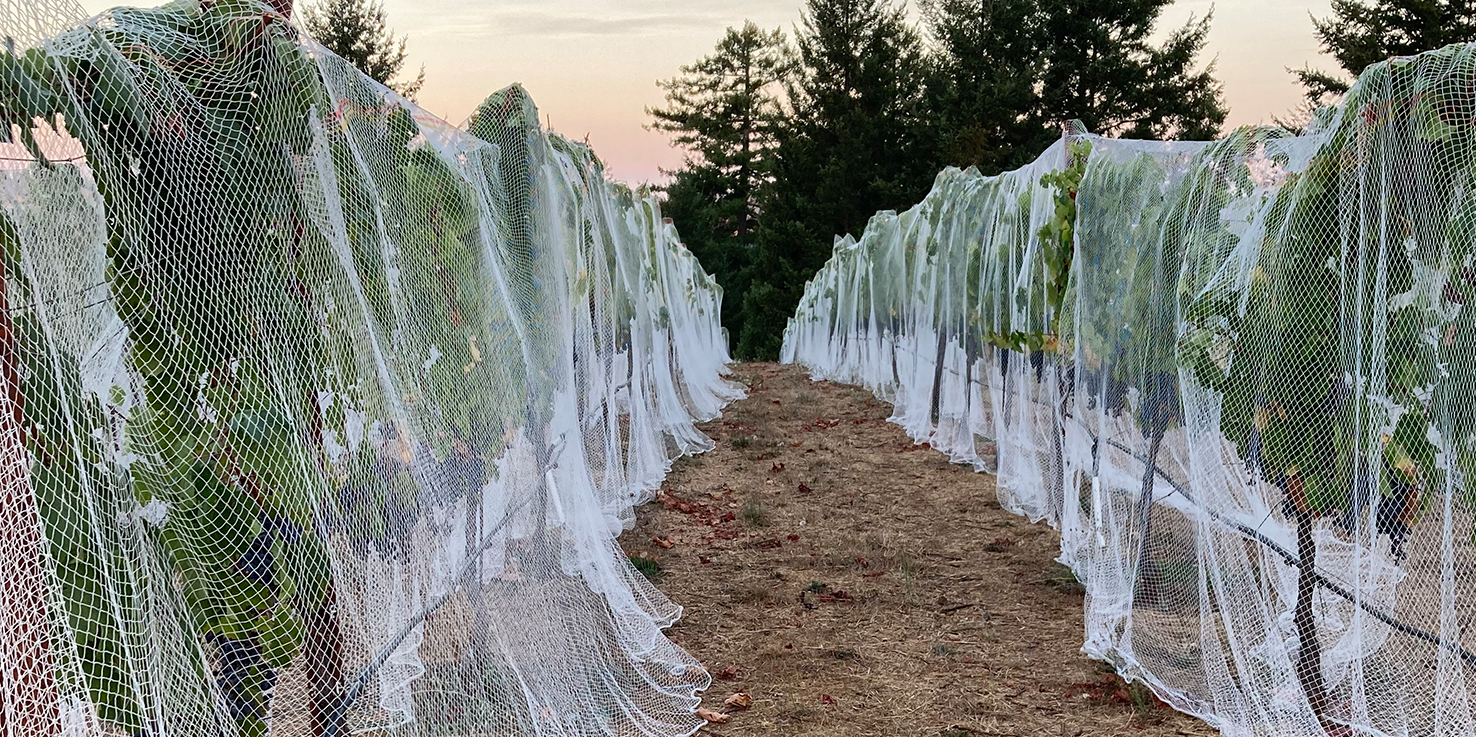
From their 1700′ elevation, the vines of Waterhorse Ridge have quite a view – rugged, redwood-covere terrain, a little view of the Pacific, the unearthly coastal fog, and some of the Sonoma Coast’s most famous Pinot Noir vineyards. Most would say it’s no place to grow Cabernet Sauvignon. We, along with vineyard owners Patricia and Jesus, beg to differ.
Patricia Greer and her husband Jesus Velasquez married and bought their land in the 1990’s, with the goals of starting a family, growing diverse crops and raising a few animals. They planted their 2-acre vineyard in 1997, the same year their first child, Jesus (“Jesusito” around the ranch) was born. At that time, the Sonoma Coast was still something of a new frontier to grape growers, but most of the area’s new growers were betting on Pinot Noir. Jesus and Patricia figured that a mix of thicker-skinned Bordeaux varieties (mostly Cabernet Sauvignon) would better withstand the coastal moisture, and would also have the “little black dress” sort of versatility to carry on through the fickle turns of the wine market.
Waterhorse Ridge enjoys a cool coastal climate, but does get some hot days due to its high perch on Stewart Ridge. The soil is rocky, well-drained loam derived from uplifted ocean floor sediments and basalts. Jesus and Jesusito farm the vineyard meticulously, managing the vines’ canopy by hand and keeping any other inputs to a minimum. In all but the hardest years, they’ve been able to limit spraying to one or two sulfur applications in a season. The old horse and the burro grazing in the vineyard have kept the cover crop (mostly clover) in check during the winters. Gophers are kept in check by a Jack Russell and a small army of cats. Other than limited irrigations in the recent drought seasons, the vineyard has been dry-farmed for many years.

When the water in the east fork of the Russian River is running high, the whir of a hydropower generator can just be heard over the river’s turbulence. This generator, which provides electricity to much of the sparsely-populated Potter Valley, is located on the edge of the Vecino Vineyard property. The guy who keeps the turbines in good working order is Vecino’s owner, Luke Miller. Luke, who formerly used his wrench-turning skills for ski lift maintenance (a.k.a. highly-skilled ski bumming) in Tahoe, purchased the Vecino Vineyard in 2003. Fortunately, the best parts of ski season don’t overlap too much with grape-growing season, during which Luke is almost single-mindedly committed to growing good wine.
The Vecino Vineyard is located near the northeast corner of Potter Valley, about 30 minutes’ drive outside of Ukiah in Mendocino County. The Sauvignon block, planted in the late 80’s, climbs a south-facing slope above the headwaters of the east fork of the Russian River. Potter Valley is known for sweltering hot days and piercing cold nights. While these extremes present challenges, they’re ideal for keeping the grapes’ natural acidity intact through the ripening season, and they also mean disease pressure is low. The soils are alluvial plain deposits derived from the Franciscan Complex bedrock of the hills that ring the valley. At Vecino, it goes from sandy loam on the hillsides to clay-rich loam in lower areas.
“Conscientious” might be the best word to describe the farming at Vecino. Luke pays close attention to his vineyard, giving it the best care he knows how to give. This means keeping the soil healthy by avoiding any use of herbicides and by applying biodynamic practices. It also means intervention only happens when it’s really needed. Working this way, in the favorable environment of Potter Valley, means that Luke is able to grow healthy grapes without making a fight out of it (ZERO sprays in 2018!).
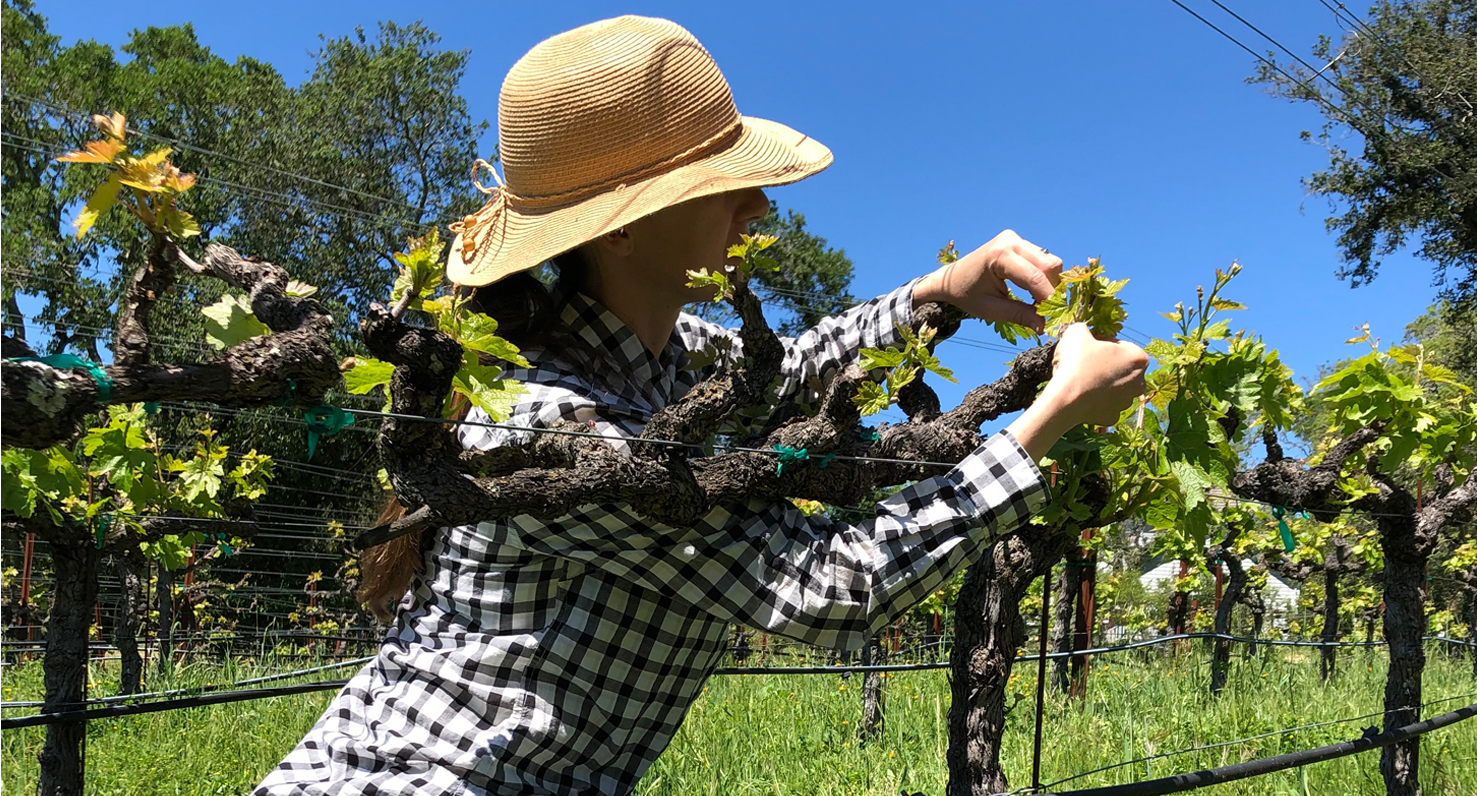
Adel Atallah bought his small hillside property outside Healdsburg back in the 1990’s. The attractions of the place are obvious – a beautiful view of the Dry Creek Valley, a seasonal creek, and a good supply of water among them. At the top of the property sits a fabulous house, and broad palm trees line the drive
Adel is known in Sonoma County as master of the greasy spoon breakfast, and along with the generous helpings, his restaurants are known for great service and a connection to community. Back in 2001, when Adel was considering what to do with the land between the house and Dry Creek Road, his community spirit moved him to plant what made Dry Creek Valley famous: Zinfandel.
The soil at Adel’s is is a brownish gravelly clay-loam, with numerous rocks up to fist-size that would make mechanical mowing a messy affair. Thus, the ground cover is managed almost entirely by Randy and his weed eater. When we took over the vineyard, there were a few areas with weak or dead vines that we have worked to rehabilitate or replant. We started with the soil, re-invigorating with compost and compost tea, and working a few seeds into the cover crop. Formerly overworked vines that couldn’t properly ripen as much fruit as they carried have been cut back and retrained, and are now producing modestly and gracefully. In 2022, seeing a little relief from the drought, we removed some dead vines and replanted with a mix of Italian varieties that might be grown alongside Primitivo (the original name for Zinfandel in Italy) in the old world.

The Gianoli family immigrated from Prata, Italy in 1882 and soon after planted 20 acres of Zinfandel. The old winery and tavern they built is still onsite, and in the early days visitors could enjoy the Gianolis’ wines for 40 cents a gallon. The ranch hosted both overnight ranch guests and passing locals in its tavern, where there are names carved into the bar and walls with dates as far back as the 1900’s. Current owners Mike and Jenny Kelly spend their summers at the ranch, and grow enough food in their garden to feed an army.
With soils derived from broken-down sandstone, phylloxera never came to Gianoli, and the old vines made it past the 100-year mark before being replaced in 1993. The replacement cuttings came from the Pronsolino vineyard (now DuPratt), another historic Mendocino Ridge site, boasting the only virus-free old vine Zinfandel in California.
The sandy soils are nutrient-poor but deep, and the vines are own-rooted and mostly dry farmed. Vine vigor is low, and production is modest at best. Vineyard manager Steve Alden grew up in the area, and has been farming grapes on the Mendocino Ridge’s “islands in the fog” for decades. We pitch in and help Steve and his crew with winter composting, pruning and picking, and try to help out where we can through the rest of the season.
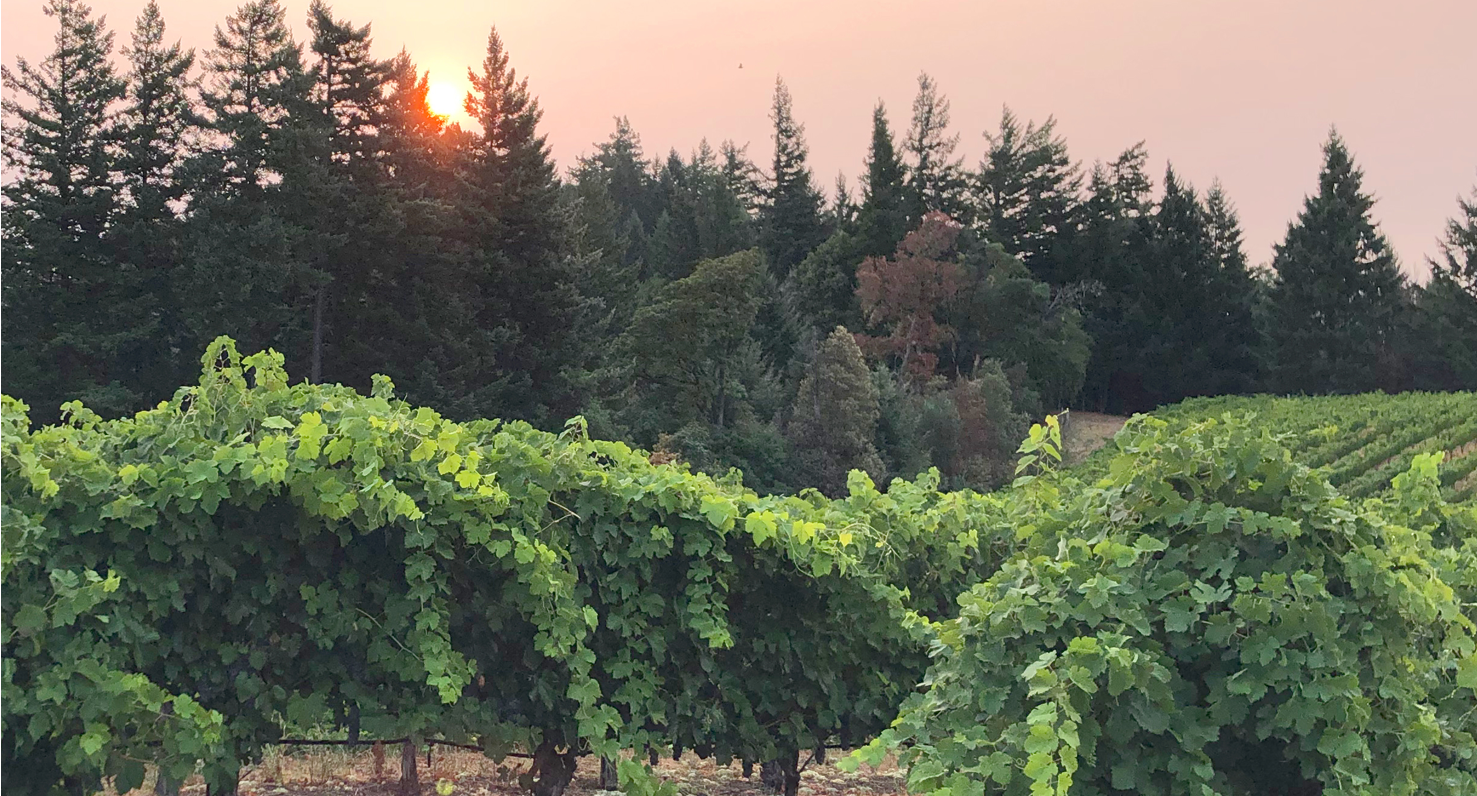
“Mendocino Ridge” is the name given to the rugged range of mountains that’s bordered on the east by Anderson Valley, and on the west by Mendocino’s Pacific coast. Defined by elevation and mostly still untamed, the Mendocino Ridge AVA exists as something of an archipelago – a discontinuous series of peaks and ridge tops that are often the only land exposed above a sea of Pacific fog. Alongside the usual challenges of growing grapes in the coastal environment, farmers here often face losing a few vines’ worth of ripening fruit in night-time raids by the local bears.
Early settlers to the area made something of a living by harvesting tan oak bark, which they collected and shipped off to tanneries across the country. Hailing from places like Lombardy, Italy, these immigrant farmers planted chestnuts and grapes on the same ridge tops where they found enough flat space to build their homes and enough sunshine to grow food.
In 1951, the Alden family bought a 2,000-acre ranch on Mendocino Ridge that includes historic vineyard sites. Among these is the 2,000-foot-elevation “Potato Patch”, a reasonably flat field of richer soil where several settler families once grew their spuds. Steve Alden, the current owner, chose low-yielding selections of Chardonnay from both California and Burgundy and planted his vines in the old potato patch. Steve and his long-time crew (they have been working together for over 15 years now) are careful farmers, often doing by hand work that’s done by tractors in most California vineyards.
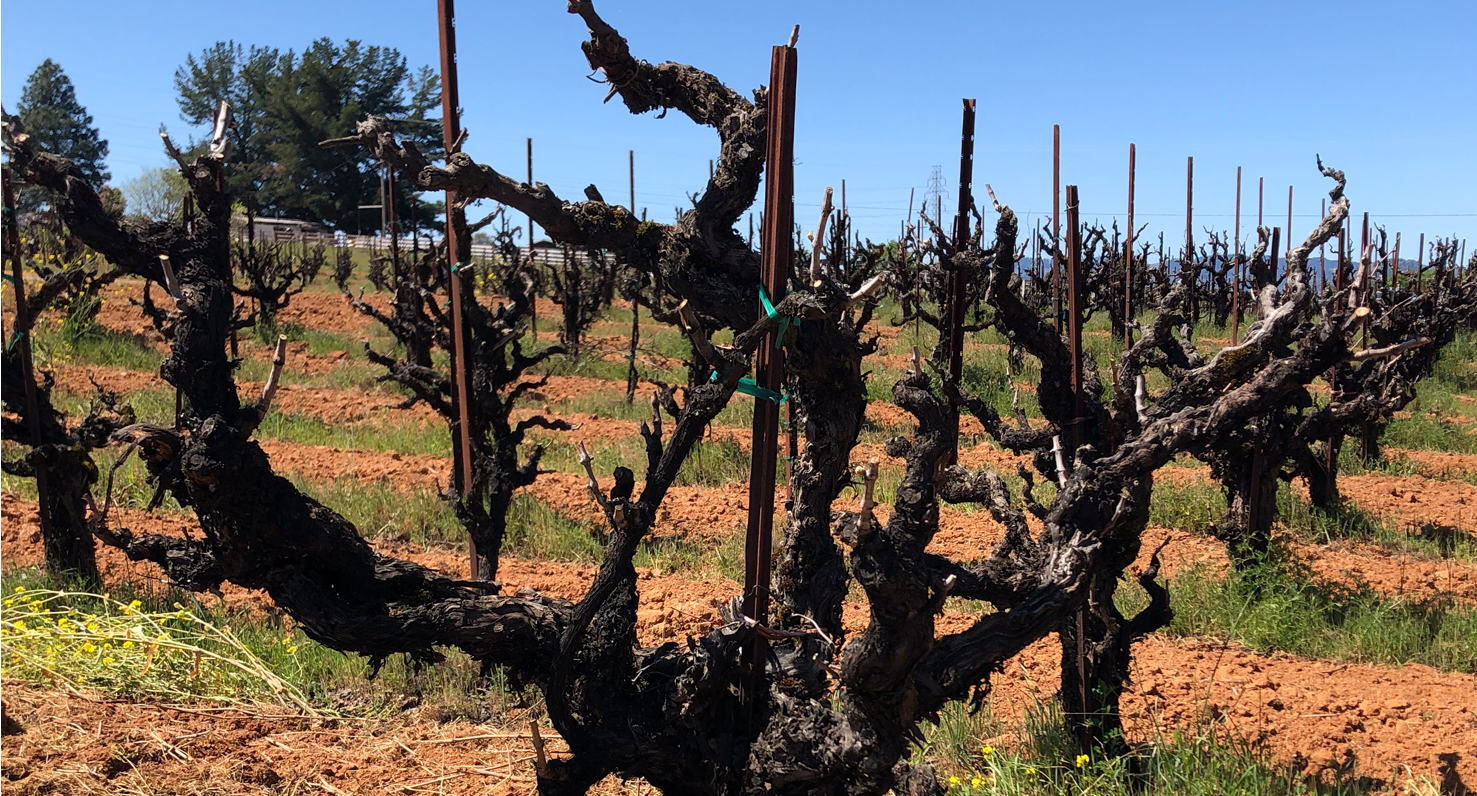
Nearly touching the southern boundary of Mendocino’s Redwood Valley AVA, Castañón vineyard sits on the edge of a plateau, 400’ above the north shore of Lake Mendocino. The vine rows extend down a gentle north-facing slope, away from the precipitous edge and away from the most intense rays of sunshine. The soil, a red-brown loam, looks just rich enough and readily gives way to the point of a shovel. Breezes coming off the lake keep the air fresh and the shoveler cool. Yes, even to the most casual visitor, this feels like a good place to grow grapes.
José Castañón who has spent plenty of time shoveling in Redwood Valley vineyards, recognized the site’s advantages right away. Growing up in a humble farming family in the mountains of Zacatecas, Mexico, José left home at 16 to seek out better opportunities north of the border. His brother (who had already migrated to Redwood Valley) put up $350 to hire a reputable coyote, who smuggled José all the way up from Tijuana. On arrival his brother greeted him with a bucket and a grape knife and immediately set him to work picking Pinot Noir for Weibel Winery. He stuck with the Weibel vineyard crew and eventually took on harvest night shift work at the winery, hoping to sock away enough to someday have a vineyard of his own. In 1993, married, wiser, and well-invested, José was able to buy the ranch and start building a home for his family.
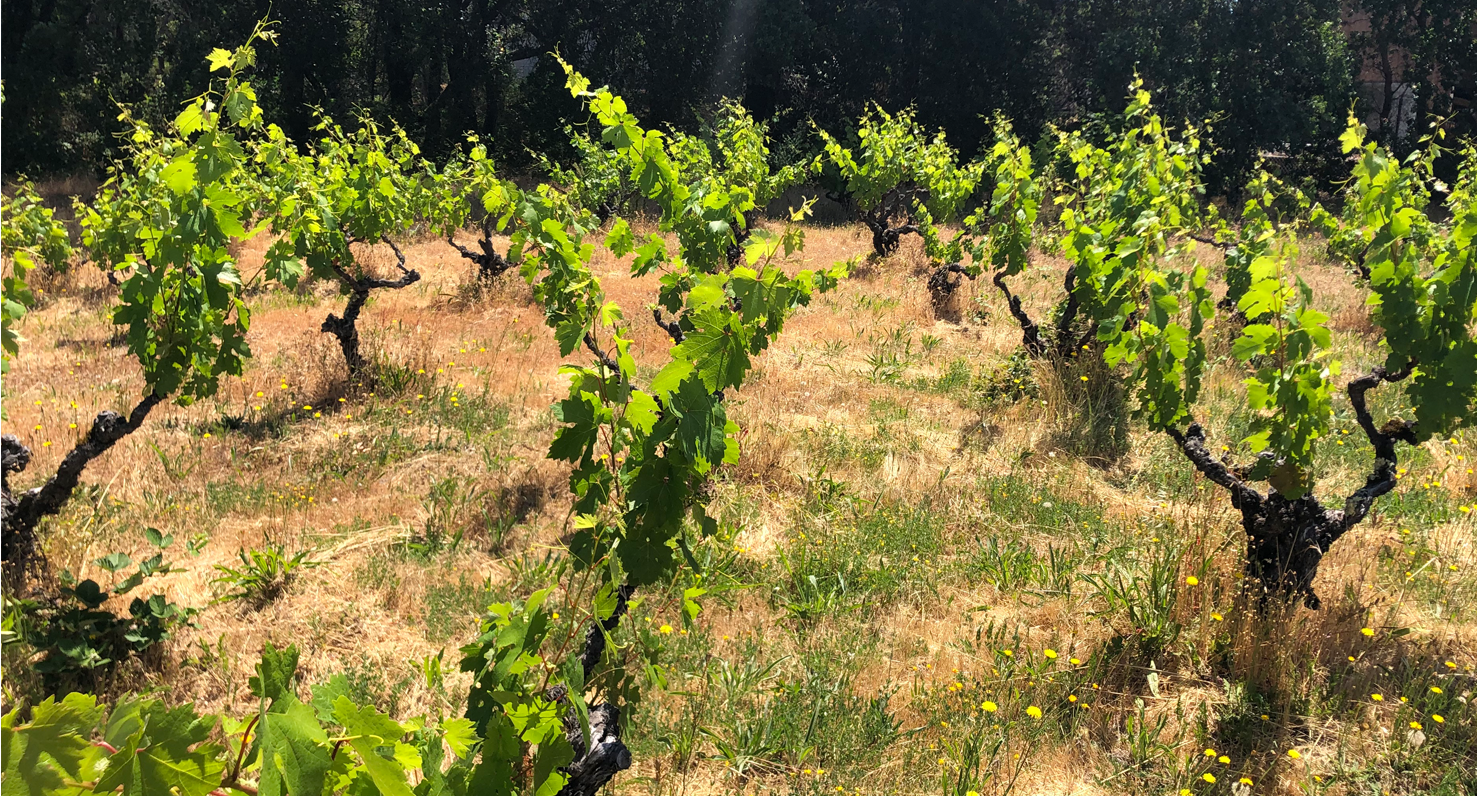
Our good friends Federica “Freddie” Calabresi and José “Joe” Ramirez frequently pass through the lower end of Alexander Valley on their way to visit Joe’s Mother in Cloverdale. While passing this way in 2012, they noticed an old-vine vineyard that had obviously gone untended for more than a year. The vines were unpruned, and blackberry and poison oak were taking over. At that time they were seeking grapes for a little garagiste project, so they tracked down the vineyard owners and asked a few questions. They learned that the vines were well over 100 years old – a field blend of 8 or more varieties that was probably planted by early settlers to the area – and they made a deal to keep the vineyard looking good in exchange for the grapes.
Freddie and Joe set to work without much in the way of equipment, but with plenty of determination. With hand tools and a good weed eater (along with plenty of band-aids and a cabinet full of poison oak remedies) they battled to take the vines back from the brambles. The unpruned vines were a puzzle that took a couple of years to untangle. Blood, sweat, and persistence paid off and they brought home enough grapes to make some pretty delicious wines. Years later they chose to turn the garage into an apartment, but they didn’t want to give up the vineyard. Instead, they offered to sell the grapes to us!
We made the first Unturned Stone wine from the site in 2018 and we’re incredibly grateful to work with Freddie, Joe, and these wise old vines. Our collaboration still happens with no irrigation, no tractor, and no sprays – just friendship, heaps of care and commitment, and respect for the elders!